Common Citation Mistakes: Identifying and Avoiding Them

Ashley Merit
Content writer and editor for Netus.AI
Table of Contents
Common Citation Mistakes. Citations play a crucial role in academic writing, as they allow writers to give credit to original sources and avoid plagiarism. The improper use of someone’s work may lead to harmful consequences, such as legal actions taken by the original author. While some writers focus on writing styles and formats, they might take citations casually, leading to errors. To maintain a high level of accuracy and clarity in any research paper, understanding the importance of proper citation is essential.
In the process of drafting an extensive research paper, a long list of citations may emerge. Here lies the challenge for writers to determine what to cite and what not to. At times, publishers may encourage abbreviating works to avoid an excessive number of pages, which could also lead to citation errors. Thus, possessing a good knowledge of appropriate citation practices is crucial when producing a research paper. Proper citation ensures that the readers can easily locate the original sources and appreciate the value of the writer’s work.
Key Takeaways
- Proper citation is essential in academic writing to give credit to original sources and avoid plagiarism.
- Writers should be careful in managing a long list of citations and determining what to include and exclude.
- Good knowledge of appropriate citation practices ensures clarity and accuracy in research papers.
How to Work on the Citation While Composing the Paper?
Writers usually maintain a list of resources they intend to quote or paraphrase, making the citation process more manageable. This list should contain essential details like the author’s name, publication date, among other relevant information. A thorough spell-check of these details helps avoid errors.
While incorporating in-text citations, writers should ensure accurate usage of quotation marks, as well as scrutinize the quoted part for potential mistakes such as spellings or misplaced periods.
A common misconception among writers is that paraphrasing does not require citing the source. Although the paraphrased content does not need quotation marks, it is essential to cite it appropriately. By following these guidelines, writers ensure proper citation and avoid inaccuracies, enhancing the credibility of their work, whether it’s an academic thesis, a scholarly article, or a reference material.
Some Common Citation Mistakes
When writing academic papers, it is crucial to pay attention to proper citation to avoid plagiarism. Here are some common citation mistakes and how to avoid them:
- Excessive Citation: It is essential to distinguish between citations and bibliography. Citations should only include the works that have been quoted or paraphrased, while all suggested sources go in the bibliography.
- Not Citing Paraphrased Content: A common mistake is not citing paraphrased content. Even if the content is rewritten, the original source must still be cited.
- Inconsistent Citation Styles: Choose a citation style such as MLA, APA, or Chicago and maintain consistency throughout your paper.
- Incorrect Citation Order: Most citation styles require the author’s last name to come first, followed by the first name and the work’s title. Cite sources alphabetically by the author’s surname to avoid confusion.
- Spelling and Punctuation Errors: Be cautious about spelling and punctuation in citations. For example, commas should be properly placed in in-text citations and citation listings.
- Incomplete Citations: Ensure that in-text citations are included along with corresponding entries in the primary citation list.
- Excessive In-text Citations: If multiple quotations from the same source appear on the same page, a single citation at the page’s end suffices, instead of including it repeatedly.
- Ignoring Online Articles: Online articles and magazines should also be properly cited, including the URL of the resource, to avoid plagiarism.
- Outdated Online Resources: Always mention the date when an online resource was accessed to account for potential updates or removals.
- Misuse of Abbreviations: Popular abbreviations like “ibid” and “et al.” can lead to mistakes if not used correctly. “Ibid” is used when referring to the previous citation, while “et al.” replaces multiple authors for a cited work. Always ensure proper punctuation, such as putting a period after “al.”
In conclusion, it is important to check your work thoroughly to ensure all citations are correctly formatted and error-free. Using a plagiarism checker can help detect any accidental duplications or citation mistakes, enabling you to fix them before submission.
Frequently Asked Questions
What errors do students often make in APA in-text citations?
- Incorrect author-date format: Students may forget to include the author’s last name followed by the publication year in parentheses, e.g., (Smith, 2020).
- Multiple authors mishandling: Not properly listing multiple authors, e.g., using an ampersand (&) instead of “and.”
- Wrong use of quotation marks and page numbers: Neglecting to use double quotation marks and forgetting to mention the page number when directly quoting a source.
- Missing citations: Forgetting to include a citation for the information or idea taken from a source.
How do mistakes in author names influence the accuracy of a citation?
Mistakes in author names can make it difficult to locate the original source and affect the paper’s credibility. Examples of common mistakes include:
- Misspelling the author’s name
- Listing the author’s first name instead of the last name
- Omitting a co-author’s name
- Merging the names of different authors in a single citation
Common blunders while constructing reference list entries?
- Inaccurate order of elements: Failing to follow the proper order of author name, publication date, title, and source
- Inconsistency in formatting: Inconsistently formatting entries for different source types
- Typos and errors: Misspelling, incorrect punctuation, wrong formatting, or errors in publication information (e.g., issue numbers and page ranges of journal articles)
How do students misunderstand online source citation requirements?
Issues with online source citations typically involve:
- Omitting important information such as the URL or DOI
- Ignoring the retrieval date for sources with dynamically changing content
- Failing to recognize different types of online sources, e.g., blogs, podcasts, and webpages, which require different citation formats
Consequences of using outdated citation style guidelines in academic papers?
Utilizing outdated citation guidelines can:
- Lead to improper formatting and inconsistency in the paper
- Affect the credibility of the paper, raising questions about the author’s diligence and professionalism
- Cause confusion for readers attempting to locate and verify the cited sources
How do errors or omissions in publication dates impact citation credibility?
Mistakes or omissions in publication dates can:
- Make it difficult to trace the development of ideas or concepts in a specific field
- Cause confusion when multiple works by the same author are published in different years
- Impair the credibility of the citation by giving the impression that the author did not pay enough attention to detail
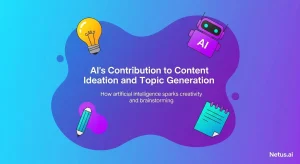
The Role of AI in Content Ideation and Topic Generation | NetusAI
AI’s contribution to content ideation and topic generation AI plays a crucial role in content creation and topic generation. Its effective application significantly reduces preparation

Leveraging AI to conquer writer's block | NetusAI
Overcoming writer’s block with AI Writer’s block affects all writers, new or experienced. Even for the most accomplished writers, this common and frustrating problem presents
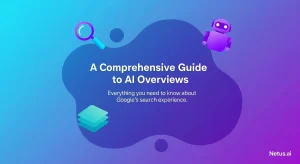
AI Overviews: A Comprehensive Guide | NetusAI
A Comprehensive Guide to AI Overviews Google has integrated AI Overviews into its search results as a knowledge panel. This feature acts like an AI
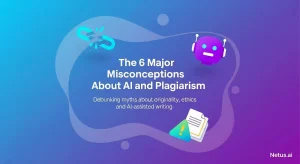
6 Common Misconceptions Regarding AI and Plagiarism | NetusAI
The 6 major misconceptions about AI and plagiarism Regarding AI and plagiarism, numerous myths, misconceptions and assumptions are circulating. Let’s distinguish between fact and fiction.
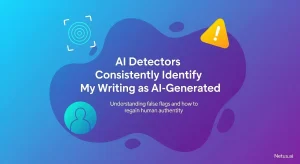
My writing is repeatedly flagged as AI generated by detection software | NetusAI
AI detectors consistently identify my writing as AI generated Even original, human-written content can face challenges from AI content detection false positives, impacting copywriters and
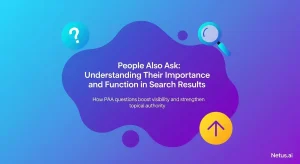
People Also Ask: Understanding their importance and function in search results
People Also Ask: Understanding their importance and function in search results A People Also Ask (PAA) search result is a zero-click Google response. It presents
